When choosing colors for your home, wardrobe, or design projects, ivory, and beige are often on the shortlist. But what exactly sets them apart?
This article will unravel the distinctions between these two popular colors. You’ll discover their historical backgrounds, how they affect mood, and where to use them in interior design, fashion, and more.
By the end, you’ll know to make informed decisions about using ivory and beige.
Ready to explore ivory vs beige? Let’s start our journey —read on to find out more.
What is the Difference Between Ivory and Beige
Ivory is a gentle variation of white, while beige falls into the soft spectrum of brown or tan. These colors have distinct personalities. Ivory brings a crisp and elegant feel, while beige offers warmth and neutrality. Explore their unique characteristics in our guide to make informed color combinations.
What is Ivory?
HEX Code: #FFFFF0
RGB: 255, 255, 240
CMYK: 0%, 0%, 6%, 0%
Ivory, with its name derived from the creamy white material of elephant tusks, has a rich history.
It was used in ancient civilizations for intricate carvings and jewelry. This precious material symbolized luxury and craftsmanship.
But, due to conservation efforts, the use of actual ivory is now highly regulated and discouraged.
Ivory represents purity, simplicity, and refinement. It’s often associated with weddings and signifies a fresh start.
In various cultures, it signifies harmony and protection against negative energies.
Its timeless appeal makes it a classic and elegant design favorite, creating a sense of understated luxury.
What is Beige?
HEX Codes: #F5F5DC
RGB: 245, 245, 220
CMYK: 0%, 0%, 10%, 4%
Beige, a muted and versatile color, derives its name from the French word “beige,” which means natural wool.
This shade gained prominence in fashion during the 1920s, reflecting a desire for simplicity and elegance.
Its popularity grew in the mid-20th century when it became a staple in interior design.
Beige embodies qualities such as calmness, neutrality, and adaptability. It is a blank canvas, allowing other colors and elements to shine.
Beige is often associated with minimalism and sophistication, making it a popular choice in modern design.
It evokes a sense of tranquility and balance, making it ideal for creating harmonious spaces and versatile wardrobes.
Differences Between Ivory and Beige
1. Beige vs ivory: Cool or warm color tones
Ivory exudes a cool colors space compared to beige. Ivory leans towards the pale, off-white spectrum, often with subtle yellow or pink hints.
It’s brighter and fresher, making it an excellent choice for creating clean, airy spaces.
Meanwhile, beige leans towards warmer tones, embracing gentle shades of brown or tan. It carries earthy undertones that evoke a sense of warmth and coziness.
Beige’s warmth can create inviting and comfortable atmospheres in interiors and fashion, making it a versatile choice for those seeking a softer, more grounded ambiance.
2. Ivory vs beige: Undertones
Ivory and beige may seem similar, but they have hidden colors that set them apart. Ivory shades often boast subtle hints of yellow or pink, giving it a delicately warm undertone.
This warmth can create a feeling of freshness and purity, making ivory ideal for elegant, inviting spaces.
In contrast, beige leans towards earthy undertones, featuring hints of brown or tan.
These warm undertones impart a sense of comfort and relaxation, making beige a popular choice for creating cozy environments.
Understanding these hidden colors helps you choose the right shade for your desired feeling in your room or outfit.
3. Ivory color vs beige: Popularity
When it comes to popularity, beige tends to take the lead. It’s a color widely embraced in fashion and interior design.
Its warm and versatile nature makes it popular for creating cozy homes and timeless wardrobes.
While elegant and classic, Ivory enjoys a different level of popularity than beige. It’s often used for specific purposes like weddings or formal events. But, it may be less commonly found in everyday fashion and interiors.
In color choices, beige is like a trusted friend, always in style and easy to incorporate into various settings.
4. Ivory vs beige color: Psychological effects
The color psychology of ivory and beige differ subtly but are noticeable. With its soft and pure character, Ivory tends to evoke feelings of cleanliness, simplicity, and sophistication.
It can create a sense of calm and purity, making it a popular choice for minimalist and elegant spaces.
Beige offers warmth and comfort. It often makes people feel relaxed, grounded, and at ease.
The earthy tones in beige can promote a cozy and welcoming atmosphere in homes and clothing.
Both colors influence emotions, so choosing between them depends on the mood you want to create in your space or outfit.
5. Beige vs ivory color: Texture
Beige and ivory exhibit distinct textures. Beige boasts a soft and cozy texture like your favorite warm blanket or a plush rug.
It evokes feelings of comfort and relaxation, making it a favored choice for creating cozy, inviting spaces.
Ivory, in contrast, offers a smoother and crisper texture. Think of it as the feel of a smooth, fine fabric or polished marble.
Ivory’s texture exudes an air of refinement and elegance, making it ideal for settings where sophistication is the desired ambiance.
These textural differences impact the tactile and visual aspects of the spaces and attire where these colors are used.
6. Color ivory vs beige: Versatility
Beige is the winner when it comes to being useful in many ways. It’s a flexible color that goes well with many different styles of clothes and decorating your home.
Beige can be an interior background for many colors, making it a smart choice for creating flexible and matching outfits and rooms.
Ivory, although elegant, is not as flexible because of its gentle warmth and brightness.
People often pick it for special occasions like weddings. It works nicely but offers a different flexibility than beige for everyday use.
7. Ivory or beige: Associations
Ivory and beige carry distinct associations. Ivory is often linked with concepts of purity, simplicity, and elegance.
It’s a color common at weddings, symbolizing new beginnings and sophistication. In some cultures, it signifies harmony and protection from negativity.
Beige is often associated with warmth, comfort, and earthiness. It’s reminiscent of cozy, relaxed environments.
Beige is often chosen for creating down-to-earth and inviting spaces, both in interiors and clothing.
Its earthy associations make it a favorite to achieve relaxation and comfort in various settings.
8. Beige color vs ivory: Visual Impact
In visual impact, beige and ivory offer distinct experiences. Beige tends to create a warm and cozy visual impact. It’s like a comforting hug, making spaces and outfits feel inviting and relaxed.
Beige’s earthy tones are calming and often blend well with various design elements.
Ivory, in contrast, delivers a visually crisp and elegant impact. It’s like a fresh breeze, offering a sense of purity and sophistication.
Ivory’s brightness and subtle warmth make it ideal for creating visually striking spaces and attire. The choice between them should align with the desired visual atmosphere.
9. Beige or ivory: Mood
When setting the mood, beige and ivory create distinct feelings.
Beige often evokes a warm and comforting mood. It’s like a cozy, quiet evening by the fireplace.
Beige’s earthy tones promote relaxation and a sense of ease, making it ideal for spaces and outfits where you want to create a calm and inviting atmosphere.
Ivory, in contrast, brings a mood of purity and sophistication. It’s akin to a bright, sunny morning.
Ivory’s clean and elegant color characteristics can uplift and create an aura of refinement, suitable for more formal settings and attire. Your choice depends on the mood you want to establish.
Ivory Vs Beige Summary Table
| Aspect | Ivory | Beige |
| Color Definition | The soft shade of white | The soft shade of brown/tan |
| HEX color Code | #FFFFF0 | #F5F5DC |
| Popularity | Less popular, formal events | Highly popular, versatile |
| Texture | Crisp, elegant | Soft, cozy |
| Versatility | Limited, formal occasions | Highly versatile |
| Associations | Purity, elegance | Warmth, comfort |
| Visual Impact | Bright, sophisticated | Warm, inviting |
| Mood | Pure, sophisticated | Warm, cozy |
Similarities of Ivory and Beige
Ivory and beige, though different, share some common traits. Both are gentle and soft colors, making them easy on the eyes.
They work well as neutral color backgrounds, allowing other colors to shine alongside them.
These colors are timeless, so they stay in style. They create a sense of calm and can make spaces feel cozy.
In fashion, ivory and beige are versatile, complementing various outfits and styles.
So, even with their distinctions, people love ivory and beige for decorating and dressing up.
Can Ivory and Beige Go Together?
Yes, ivory and beige can work well together, like good friends who get along. Here’s how you can use them:
- Different Shades: You can use light ivory colors and darker beige to make things interesting, like bright wall paint and a cozy couch.
- Different Feels: Try using ivory and beige with different textures. A soft rug on the floor or comfy cushions on the couch.
- Colors That Pop: You can add other colors to make it more exciting, like light colors or even bold ones.
- Patterns: You can use patterns with ivory and beige, like stripes or flowers, to make it look nice.
- Shiny Things: You can add shiny stuff like gold or silver to make it fancier.
Shades of Ivory
Ivory isn’t just one color; it comes in various shades. Some are closer to pure white, while others have subtle hints of pink or a yellow undertone. Here are a few different shades of ivory:
- Pure Ivory is the closest to white, with only slight warmth.
- Creamy Ivory: Slightly warmer, it has a subtle yellowish tint.
- Blush Ivory: It has a delicate touch of pink, giving it a romantic feel.
- Vanilla Ivory: This shade leans toward a creamy, off-white color with a hint of yellow.
- Pearl Ivory: It’s a brighter ivory with a pearl-like luster.
- Champagne Ivory is a warmer, golden-toned ivory often seen in wedding dresses.
Shades of Beige
Beige, like ivory, comes in various shades, each with its unique character. Here are some different shades of beige:
- Light Beige: A pale and gentle beige, almost like a whisper of color.
- Warm Beige: This shade has a cozy, earthy feel, with subtle hints of brown or tan.
- Sand Beige: It resembles the color of beach sand, offering a light and airy appearance.
- Taupe: Taupe is a darker shade of beige with more pronounced brown undertones, creating a sense of sophistication.
- Khaki: Slightly more on the greenish side, khaki beige is reminiscent of military uniforms.
- Mocha Beige: This deeper shade carries rich, coffee-like hues, adding warmth and depth to spaces or outfits.
Dive deeper into the world of beige by exploring its variations, such as balanced beige vs accessible beige. Each shade tells a unique story, allowing you to paint your world with the character that suits your style and sensibilities.
What Colors Go With Ivory and Beige?
Complementary Colors: Different colors can make ivory and beige look better. Use navy blue, dark blue, or deep green for ivory to stand out. For beige, try cool colors like teal or dark red for excitement.
Analogous Colors: Colors close to ivory and beige on the color wheel can be friends. Use soft colors like light pink or gray for ivory to make it nicer. For beige, use warm colors like terracotta or camel for coziness.
Monochromatic Colors: Use shades of ivory or beige to look smart and simple. For ivory, try various white and cream colors. For beige, experiment with different shades for interest while keeping it simple.
Chromatic Colors: To be bold, add colors like red, blue, or green with ivory and beige. Bright colors can make things exciting and interesting.
General Comparisons
Ivory vs white
Ivory is a soft, creamy shade, while white is pure and bright. Ivory has subtle warmth, often with hints of yellow or pink, giving it a gentle elegance.
White is stark and crisp, with no undertones. Ivory is a softer option that feels cozier and less clinical than white.
Ivory adds a touch of warmth and sophistication, while white provides a bright, minimalist backdrop.
Ivory vs cream
Ivory and cream colors are soft, off-white shades but have subtle differences. Ivory color has a slight warmth, often with hints of yellow or pink, giving it a touch of elegance.
Cream is yet a warmer and richer color with more pronounced yellow undertones. Ivory feels crisper and slightly brighter, while cream exudes a cozier, inviting vibe.
Beige vs taupe
When comparing beige and taupe, both are neutral shades, but they have distinct qualities. Beige is a warm, soft color with hints of brown or tan, evoking a cozy and inviting atmosphere with yellow or beige undertones.
Taupe is a cooler, grayish-brown shade that leans towards the earthy side. It has a more sophisticated and muted feel.
Beige feels warmer and cozier, while taupe adds a touch of understated elegance.
Ivory vs beige vs cream
These three colors share similarities but have distinct characteristics. Ivory is a soft off-white with subtle warm undertones, often hinting at yellow or pink. It exudes elegance and sophistication.
Beige leans towards soft browns or tans, offering a warm and cozy feel. Cream is lighter than beige, it carries a gentle, creamy appearance with a subtle warmth.
Ivory is bright and refined, beige brings warmth and versatility, and cream offers a soothing, gentle ambiance.
Common Applications of Ivory and Beige Colors
- In Homes: Ivory and beige are often used in homes. Ivory adds elegance to formal rooms, while beige creates cozy spaces.
- In Clothes: Ivory is fancy, great for weddings. Beige is versatile for casual or formal wear. Both suit any skin tone and are popular in fashion.
- In Art and Design: Ivory and beige serve as backgrounds in art and design. They give a clean, classic look, making other colors stand out.
FAQs
What color is closest to ivory?
The color closest to ivory is a very pale and soft shade of white. Ivory is a subtle off-white with hints of warmth, often with pale yellow or pink undertones. It’s a delicate color that adds elegance and sophistication to various applications, including fashion, interior design, and more.
Conclusion
Ivory and beige are like dependable friends. Ivory is elegant, and beige is cozy. They both have special qualities that make homes and outfits look nice.
By knowing how these colors are different and how they work with other colors, you can make spaces and clothes that feel just right.
Whether you want to look fancy or feel comfy, ivory and beige are good choices for making things look great.

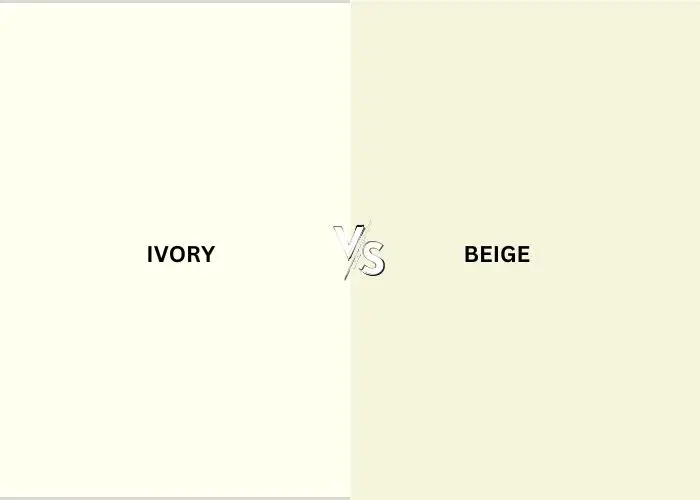
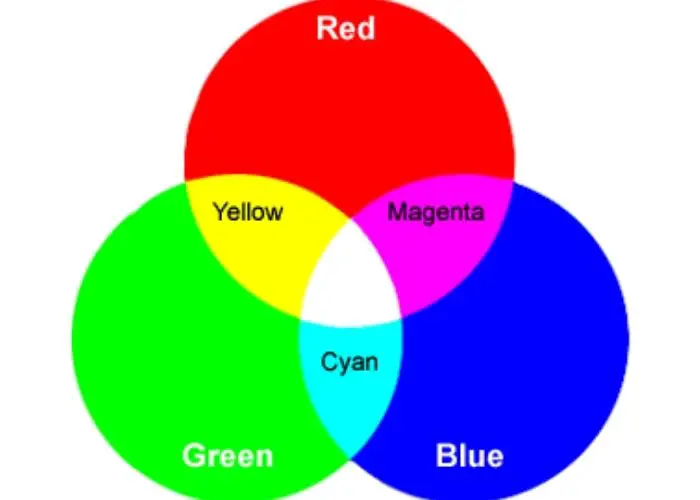
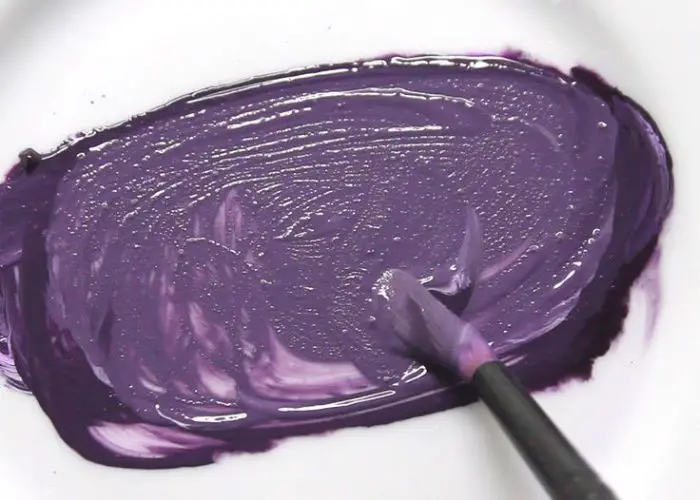
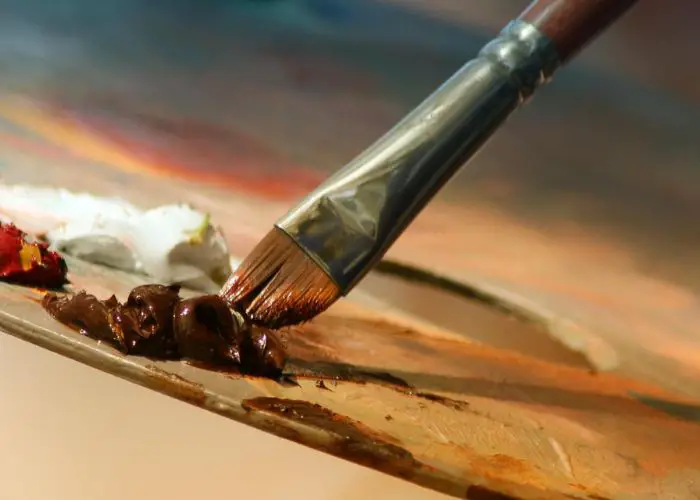
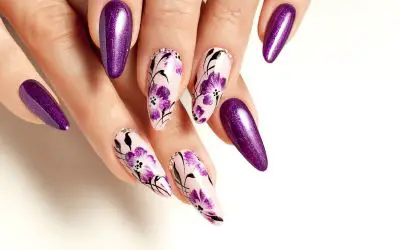



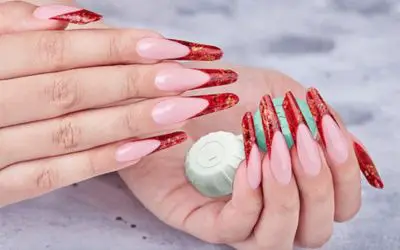
Leave a Reply